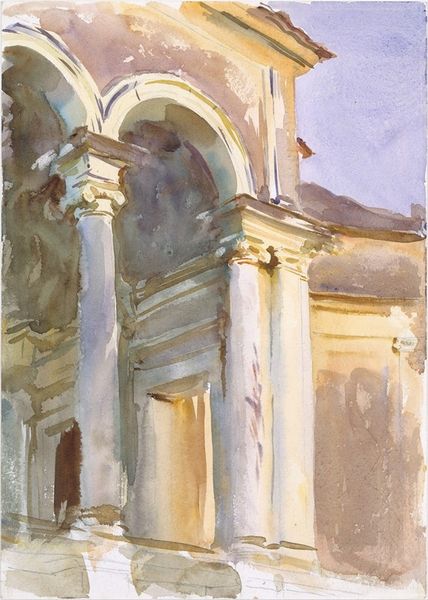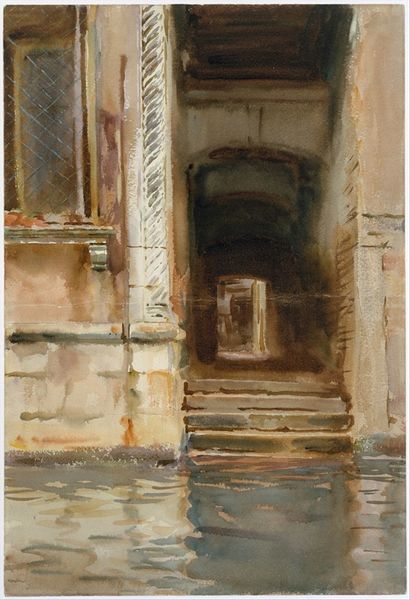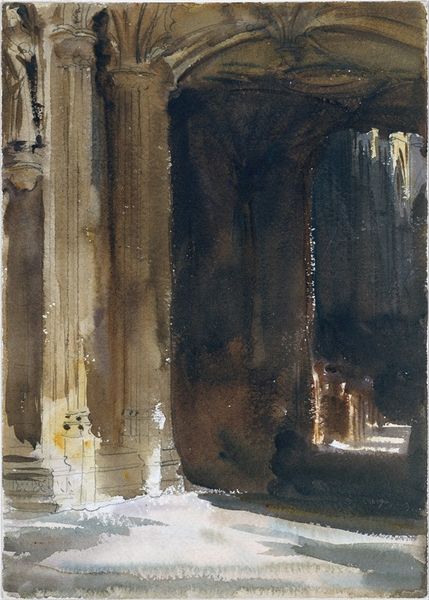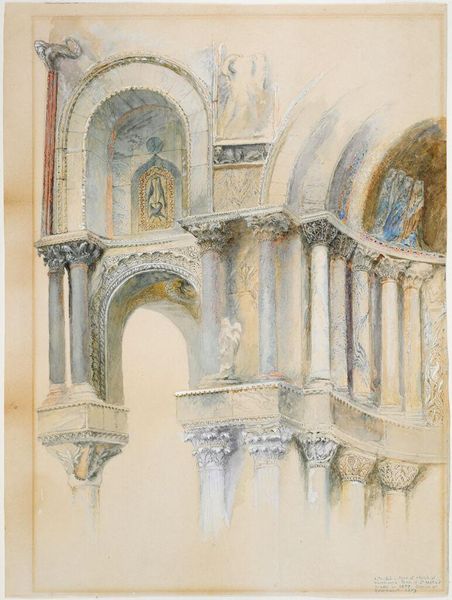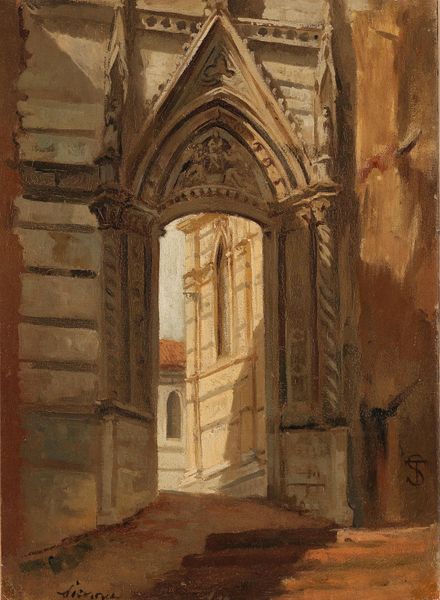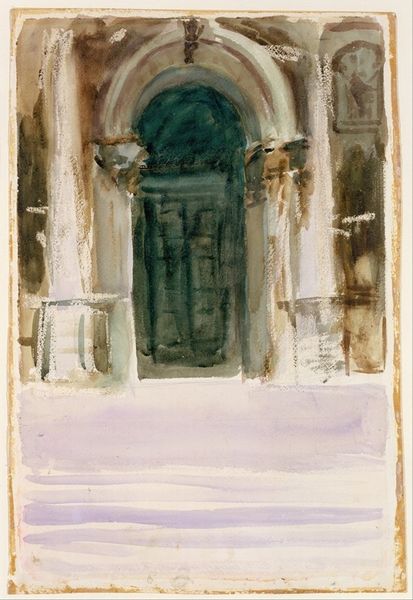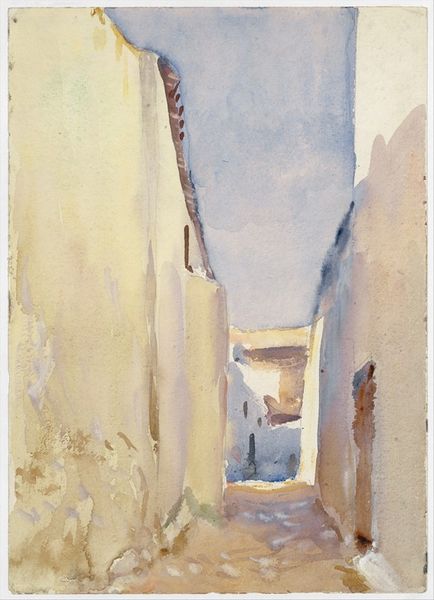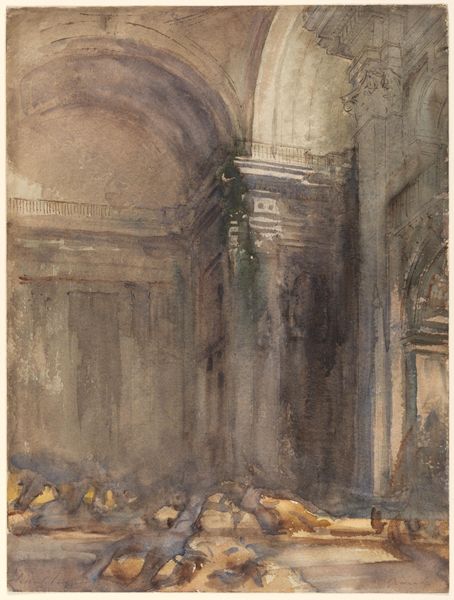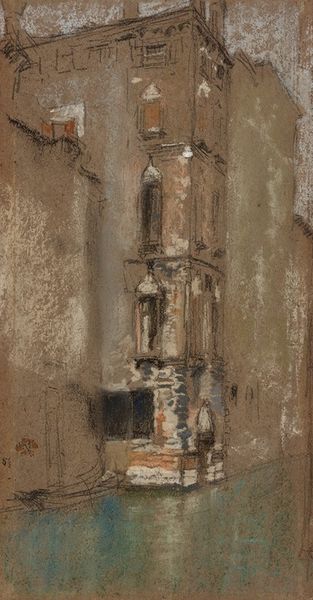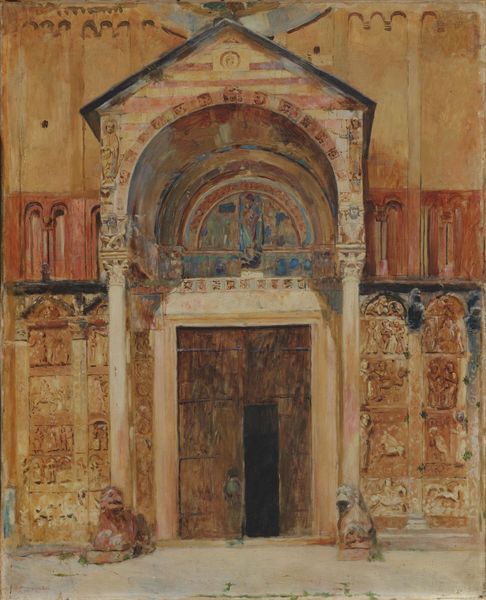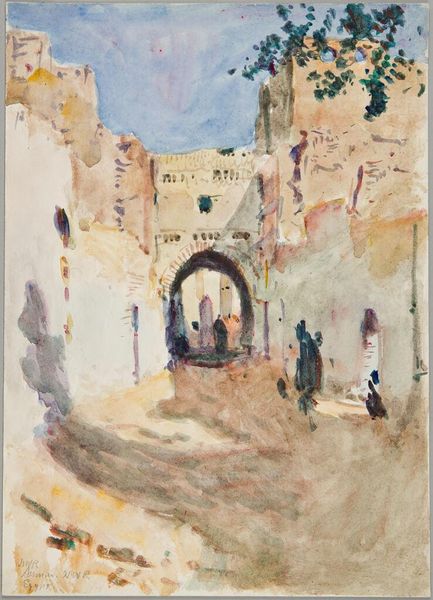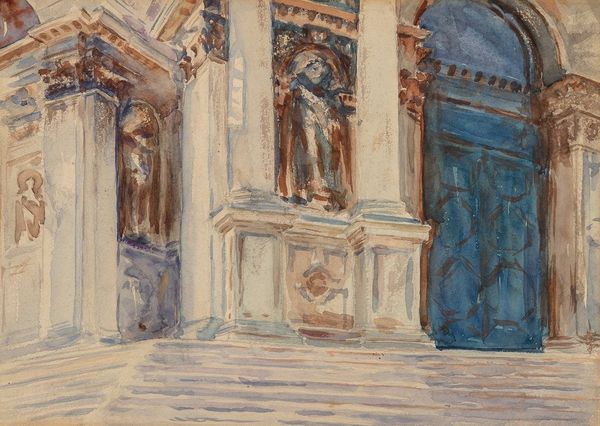
Copyright: Public Domain: Artvee
Editor: So, this is John Singer Sargent's "Arched Doorway," painted sometime between 1895 and 1908. It's an oil painting with a muted palette... I’m immediately drawn to the contrast between the open door, which appears so inviting, and the weathered walls. What do you see in this piece? Curator: I see layers upon layers of time and memory embedded in that doorway. The archway itself acts as a powerful symbol. Doorways in art often represent transitions, passages between different states of being, or even access to the unconscious. Notice how Sargent doesn't give us a clear view through the doorway; it invites speculation. What exists beyond? Hope? Disappointment? Editor: That’s a cool idea! So, like a gateway to something new, but we don’t know what it is? Curator: Precisely. Also consider the architectural details; the aging stone evokes a sense of history, almost a cultural memory. Sargent is known for painting landscapes that blend intimism with cityscapes. This piece pulls on our shared, perhaps inherited, experience of grand structures, cathedrals, or castles; things we have read about, or perhaps dreamt of. What psychological weight might these imposing architectural symbols carry? Editor: Wow, I never thought about the archway that way! I just thought it looked pretty. Now I see how it makes me wonder about the past and the future at the same time. Curator: It's the power of symbolism. And how artists can utilize familiar visual elements to provoke deep contemplation. It can invite reflection not just on physical journeys, but on internal transformations. Editor: That gives me so much to think about for my paper on symbolism. Thank you. Curator: My pleasure. Looking closer certainly can make for a richer viewing experience!
Comments
No comments
Be the first to comment and join the conversation on the ultimate creative platform.
